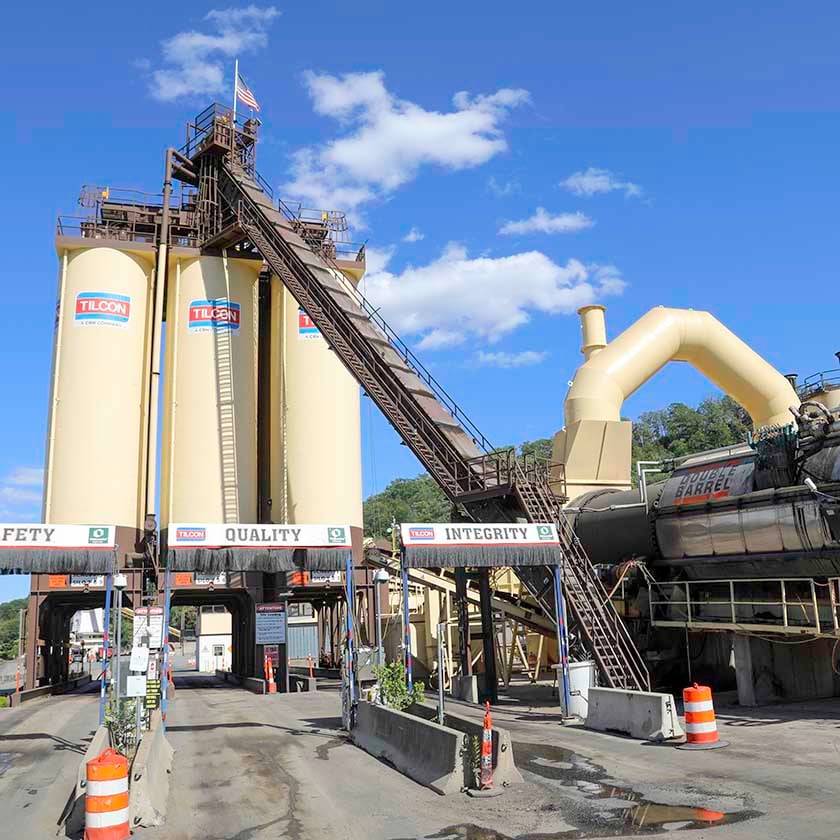Hot Mix Asphalt: The Foundation for Safe and Secure Angled Parking Lots
Unlocking the Tricks of Warm Mix Asphalt Modern Technology
Exploring the midsts of warm mix asphalt modern technology reveals a globe where exact formulations and meticulous processes converge to form our roadways and framework. The combination of aggregates, fillers, and binders isn't merely a construction task but a strategic orchestration of longevity and effectiveness. As we peer into the intricate dance of components, a tapestry of durability and sustainability unfolds. But what lies under this surface of asphaltic proficiency, and what tricks wait to be revealed in the realm of leading innovations?
Value of Hot Mix Asphalt
Warm Mix Asphalt plays a vital function in contemporary infrastructure advancement as a result of its sturdiness and cost-effectiveness. As the most typically made use of paving product for roads, highways, and car park, Hot Mix Asphalt supplies a range of benefits that contribute to its value in construction jobs. One vital advantage is its capacity to endure rush hour tons and extreme weather condition problems, providing a reputable and long-lasting surface for transport networks. In Addition, Hot Mix Asphalt is affordable in both preliminary construction and long-lasting maintenance, making it a favored selection for several infrastructure tasks.
The toughness of Hot Mix Asphalt stems from its make-up, which includes accumulations, binder, and filler materials that are meticulously chosen and blended to fulfill certain performance needs. Generally, the importance of Hot Mix Asphalt in infrastructure growth can not be downplayed, as it proceeds to be a foundation of modern construction techniques.
Components of Asphalt Mixes
The make-up of asphalt mixes includes carefully selected aggregates, binder, and filler products that are crucial for accomplishing certain performance demands. Accumulations are the main component of asphalt mixes, supplying strength and stability. These accumulations can be natural, such as crushed rock or crushed rock, or artificial, like recycled materials from old pavements. The binder, generally asphalt or asphalt concrete, holds the accumulations together and supplies versatility and sturdiness to the mix. The option of the binder is essential as it straight affects the mix's efficiency in various weather. Fillers, such as hydrated lime or Rose city concrete, are used to boost the mix's workability and aging resistance. Angled Parking.
The mix and percentage of these parts play a significant role in establishing the top quality and efficiency of the asphalt mix. Designers meticulously design the mix to meet certain demands, taking into consideration variables like website traffic quantity, environment conditions, and pavement lifespan. Proper selection and balancing of aggregates, binder, and fillers are crucial for developing sturdy, durable asphalt sidewalks.
Combining and Production Strategies

Once the aggregates are chosen, the binder, commonly asphalt concrete, is included in bind the products with each other. The binder's quality and amount significantly impact the mix's resistance, flexibility, and strength to environmental variables. Furthermore, fillers like hydrated lime or Portland concrete might be integrated to improve certain characteristics of the asphalt mix, such as its workability or dampness resistance.
Throughout production, the aggregates and binder are heated, normally in between 250-325 ° F(121-163 ° C ), to assist in mixing and ensure correct coating of the aggregates. The blending procedure should be comprehensive to achieve an uniform combination that advertises the desired efficiency attributes of the asphalt. Different techniques, such as batch mixing or drum blending, are utilized to achieve high-grade and consistent asphalt blends for building tasks.
Aspects Affecting Asphalt Efficiency
Factors affecting asphalt performance include an array of variables that impact the toughness, longevity, and general quality of asphalt pavements. One crucial aspect is the top quality of products utilized in the asphalt mix.

Ecological conditions additionally influence asphalt efficiency. Temperature variants, moisture seepage, and traffic lots can all influence the structural stability of the sidewalk. Design factors to regrading consider, such as sidewalk thickness and drainage, are necessary in guaranteeing the long-lasting efficiency of the asphalt pavement. By very carefully thinking about these elements, designers and contractors can enhance asphalt efficiency and boost the life span of sidewalks.
Lasting Practices in Asphalt Modern Technology

Furthermore, the development of warm-mix asphalt (WMA) technologies has actually gotten grip recently. WMA enables the production and positioning of asphalt mixes at lower temperature levels contrasted to typical hot-mix asphalt, resulting in lowered power consumption and greenhouse gas exhausts. In addition, the usage of porous asphalt blends can aid mitigate stormwater drainage problems by allowing water to penetrate with the sidewalk and right into the ground, promoting all-natural water filtration and charge procedures. By executing these lasting practices, the asphalt sector can contribute to constructing a more eco-friendly and durable facilities network.
Conclusion
In conclusion, warm mix asphalt modern technology plays an essential function in contemporary framework growth as a result of its durability and cost-effectiveness. By very carefully stabilizing parts, employing appropriate mixing techniques, and taking into consideration numerous factors, designers can develop high-quality asphalt blends that endure heavy traffic loads and harsh climate condition. Welcoming lasting methods, such as utilizing recycled products and warm-mix modern technologies, additionally improves the environmental friendliness of asphalt modern technology.
Mixing and manufacturing techniques in hot mix asphalt modern technology include the accurate combination and handling of accumulations, binder, and fillers to create a durable and high-performance asphalt mix.Aspects influencing asphalt performance include a range of variables that influence the toughness, durability, and overall top quality of asphalt pavements. Lasting techniques in asphalt innovation encompass numerous initiatives intended at minimizing the environmental influence of asphalt production and paving procedures. By incorporating reclaimed asphalt sidewalk (RAP) and recycled asphalt shingles (RAS) right into new asphalt blends, the market can significantly lower the usage of raw products and energy, while additionally reducing land fill waste.
WMA enables for the manufacturing and placement of asphalt blends at lower temperature levels compared to typical hot-mix asphalt, resulting in decreased power consumption and greenhouse gas exhausts.